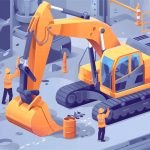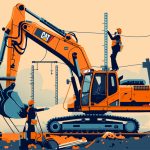Caterpillar Aftermarket Parts Freight Optimization
Importers and distributors of engineering vehicle parts, particularly those for Caterpillar machinery, understand the importance of efficient freight optimization when it comes to sourcing aftermarket parts. Caterpillar machines are renowned for their durability and reliability, but even the best equipment requires regular maintenance and replacement parts. To ensure a smooth supply chain and keep costs down, optimizing freight for aftermarket parts is crucial.
Choosing the Right Freight Options
When it comes to importing aftermarket parts for Caterpillar machinery, importers and distributors have a variety of freight options to choose from. Air freight, sea freight, and road freight are the most common choices, each with its own pros and cons. Air freight is the fastest option but often comes with a higher price tag, while sea freight is cheaper but can take longer. Road freight is a good option for shipments within the same region. By carefully considering the urgency of the parts needed and the budget available, importers can choose the right freight option to optimize their supply chain.
Consolidating Shipments
One way to optimize freight for Caterpillar aftermarket parts is to consolidate shipments whenever possible. By combining multiple orders into one shipment, importers and distributors can take advantage of economies of scale and reduce overall shipping costs. Consolidating shipments also helps to minimize the risk of delays and lost packages, as fewer shipments mean fewer opportunities for things to go wrong. Importers should work closely with their suppliers to coordinate shipments and ensure that orders are consolidated whenever feasible.
Utilizing Technology for Tracking and Monitoring
In today’s fast-paced world, technology plays a crucial role in optimizing freight for aftermarket parts. Importers and distributors can use advanced tracking and monitoring systems to keep tabs on their shipments in real-time. These systems provide up-to-date information on the location of the cargo, estimated time of arrival, and any potential delays. By leveraging technology, importers can proactively address any issues that may arise during transit and ensure that their aftermarket parts reach their destination on time and in good condition.
In conclusion, optimizing freight for Caterpillar aftermarket parts is essential for importers and distributors to maintain a smooth and cost-effective supply chain. By choosing the right freight options, consolidating shipments, and utilizing technology for tracking and monitoring, importers can streamline their operations and ensure timely delivery of parts to their customers. Embracing these strategies will not only benefit the bottom line but also help to build a reputation for reliability and efficiency in the industry.




